Autodesk AutoCAD LT 2009 User manual
- Category
- Computer Aided Design (CAD) software
- Type
- User manual
This manual is also suitable for

www.autodesk.com/autocad
AutoCAD LT
®
2009
Preview Guide

AUTOCAD LT 2009 PREVIEW GUIDE
www.autodesk.com/autocadlt Confidential–Subject to Nondisclosure Agreement
Contents
Introduction ........................................................................................................................................................ 3
User Interface ..................................................................................................................................................... 3
Application Window ........................................................................................................................................ 3
Menu Browser ................................................................................................................................................ 3
Quick Access Toolbar ..................................................................................................................................... 7
InfoCenter ....................................................................................................................................................... 7
Ribbon ............................................................................................................................................................ 8
Status Bar ....................................................................................................................................................... 9
Quick Properties ........................................................................................................................................... 11
Quick View Layouts ...................................................................................................................................... 14
Quick View Drawings .................................................................................................................................... 16
Tooltips ......................................................................................................................................................... 18
Hidden Message Settings ............................................................................................................................. 20
Design and Drafting ......................................................................................................................................... 21
Layer Management ....................................................................................................................................... 21
Working with DGN files ................................................................................................................................. 22
DWFx Support .............................................................................................................................................. 24
Xref Clipping ................................................................................................................................................. 25
Interactive Array Preview .............................................................................................................................. 26
Find and Replace .......................................................................................................................................... 26
Visualization ..................................................................................................................................................... 26
Geographic Location ..................................................................................................................................... 26
Navigation Wheel .......................................................................................................................................... 27
Image References ........................................................................................................................................ 28
Nonrectangular Viewports ............................................................................................................................ 29
Full Color and Color Book support ................................................................................................................ 30
Fields ............................................................................................................................................................ 31
64-Bit Operating System Support ................................................................................................................... 31

AUTOCAD LT 2009 PREVIEW GUIDE
www.autodesk.com/autocadlt Confidential–Subject to Nondisclosure Agreement
Introduction
You can dramatically increase your productivity with AutoCAD LT
®
software, the world’s number-one-selling 2D
drafting and detailing product. AutoCAD LT is a powerful solution for designers who need full native DWG™ file
format compatibility without 3D capabilities or advanced customization. Increase efficiency with an updated user
interface that not only accelerates routine tasks but also makes commands easier to find, helping new users
become productive as quickly as possible. And working with layers is now easier than ever. Move to new levels
of productivity with AutoCAD LT software.
User Interface
Application Window
The AutoCAD LT 2009 application window offers a new look and feel. It provides easy access to the most
commonly used tools while maximizing the drawing area. The default application window includes the Menu
Browser, Quick Access toolbar, InfoCenter, Ribbon, and Status bar. Many of these user interface
enhancements become even more valuable with a dual monitor configuration.
The default model space background has been changed to an off-white, which enables you to draw in model
space with dark colors that you can see just as easily on the white layouts.
Figure 1. AutoCAD LT 2009 application window
Menu Browser
The new Menu Browser provides easy access to a variety of content, including commands and documents,
from a single button in the upper-left corner of the AutoCAD LT display.
InfoCenter
Quick Access toolbar
Ribbon
Menu Browser
Status Bar

AUTOCAD LT 2009 PREVIEW GUIDE
www.autodesk.com/autocadlt Confidential–Subject to Nondisclosure Agreement
Figure 2. Menu Browser button
The Menu Browser displays a vertical list of the menus, emulating the menus that traditionally ran horizontally
across the top of the AutoCAD LT window. Selecting a menu from the Menu Browser expands the menu list,
enabling you to launch a command.
Figure 3. Menu Browser
A search tool at the top of the Menu Browser enables you to search the CUI (customize user interface) file for
key terms. For example, as you begin typing L-I-N-E in the search field, AutoCAD LT dynamically filters the
search options to display all CUI entries that include the word line (Linetype, Command Line, Line, Multiline,
and so forth). You can then click a listed item to launch the associated command.

AUTOCAD LT 2009 PREVIEW GUIDE
www.autodesk.com/autocadlt Confidential–Subject to Nondisclosure Agreement
Figure 4. Menu Browser search tool
In addition to providing command access, the Menu Browser enables you to view and access recent or open
documents. You can display the document names along with icons or with small, medium, or large preview
images, making them easy to identify.
Figure 5. Menu Browser document preview images

AUTOCAD LT 2009 PREVIEW GUIDE
www.autodesk.com/autocadlt Confidential–Subject to Nondisclosure Agreement
When viewing recently used documents in the Menu Browser, you can display them in an ordered list or group
them by date or file type. Hovering the cursor over a document name automatically displays a preview image
and other document information.
Figure 6. Recent documents preview
In addition to recent documents, the Menu Browser offers easy access to recently taken actions. You can view
a list of the actions you have recently selected and then select one to repeat it.
Right-click menus within the Menu Browser offer additional controls, including the ability to pin a recent
document or action so that it remains on the list and the ability to clear the Recent Documents or Recent
Actions list.

AUTOCAD LT 2009 PREVIEW GUIDE
www.autodesk.com/autocadlt Confidential–Subject to Nondisclosure Agreement
Figure 7. Menu Browser right-click menu options
Quick Access Toolbar
The Quick Access toolbar is displayed at the top of the AutoCAD LT window, next to the Menu Browser. It
includes the most commonly used tools, such as New, Open, Save, Plot, Undo, and Redo. You can add and
remove tools using the Customize User Interface dialog box, which is accessible from the right-click menu.
Drag commands from the Command list onto the Quick Access toolbar. The Quick Access tools, which are
saved on a per-workspace basis, can be reorganized or removed by expanding the Quick Access Toolbar node
under each workspace. In addition to the Customize the Quick Access Toolbar option, the right-click menu
enables you to control the display of the menu bar and toolbars.
Figure 8. Quick Access toolbar
InfoCenter
The InfoCenter has been enhanced in AutoCAD LT 2009 to provide more flexibility when searching for help.
You can collapse or expand the search field, saving space on the title bar. And when searching the AutoCAD
help system for a topic, you can specify which document to search, decreasing the amount of time you spend
trying to locate a topic.

AUTOCAD LT 2009 PREVIEW GUIDE
www.autodesk.com/autocadlt Confidential–Subject to Nondisclosure Agreement
Figure 9. InfoCenter
Ribbon
The Ribbon, displayed near the top of the AutoCAD LT window, provides easy access to AutoCAD LT tools
through a collection of tabs and panels. Each tab contains multiple panels, and each panel contains multiple
tools. Some panels can be expanded to access additional tools.
Figure 10. Ribbon
By default, the Ribbon is docked at the top of the AutoCAD LT window. However, a right-click menu enables
you to control the display and behavior of the Ribbon. You can close the Ribbon and reopen it later using the
Ribbon command. Reduce the amount of space the Ribbon occupies by disabling the Show Panel Titles option
or by minimizing the tabs or panel titles.

AUTOCAD LT 2009 PREVIEW GUIDE
www.autodesk.com/autocadlt Confidential–Subject to Nondisclosure Agreement
Figure 11. Ribbon right-click menu
You can also emulate Dashboard behavior by undocking the Ribbon and anchoring it to the left or right.
Figure 12. Ribbon title bar right-click menu
You can control the display of content within the Ribbon’s tabs and panels; just right-click to display the context-
sensitive menu and turn Panels or Tabs on and off. Easily reorganize Ribbon tabs, or panels within the tabs, by
dragging them to new locations. You can even drag panels off the ribbon to create separate, floating panels.
And to customize the Ribbon still further, you can access the new Ribbon nodes in the Customize User
Interface dialog box.
Figure 13. Ribbon content right-click menu
Status Bar
The AutoCAD LT status bar has been updated with new tools and icons. The left side of the Status bar includes
button toggles for familiar functions such as Osnap, Grid, and Dynamic Input. A right-click menu enables you to
easily switch the Status bar display from icons to traditional text labels and back. The Quick Properties (QP)
toggle is a new addition to the Status bar.

AUTOCAD LT 2009 PREVIEW GUIDE
www.autodesk.com/autocadlt Confidential–Subject to Nondisclosure Agreement
Figure 14. Status bar toggles
The right-click menus for some Status bar toggles include additional controls relevant for that particular toggle.
Easy access to these controls minimizes the need to access them in the Settings dialog box.
Figure 15. Right-click menus for Snap, Polar, and Osnap
The Model and Layout buttons have been moved to the right side of the Status bar, where several new tools
have also been added. The Layout flyout has been replaced by the Quick View Layouts button, which is
accompanied by the Quick View Drawings button. The Status bar provides easy access to navigation and
viewing tools, including Pan and Zoom as well as the new SteeringWheels™ functionality. The Annotation scale
button has been replaced by a Viewport/Annotation toggle that links the Annotation scale to the viewport scale,
helping to ensure that they stay in sync. A new Workspace Switching button replaces the Workspaces toolbar,
providing the same functionality in considerably less space.

AUTOCAD LT 2009 PREVIEW GUIDE
www.autodesk.com/autocadlt Confidential–Subject to Nondisclosure Agreement
Figure 16. Status bar tools
Quick Properties
The Quick Properties panel enables you to view and modify object properties when you need them, without
sacrificing screen real estate. You can turn on quick properties with the QP toggle on the Status bar. With it
turned on, the Quick Properties window automatically displays an editable list of properties when you select an
object. If the list of object properties exceeds the length of the Quick Properties window, passing your cursor
over the Quick Properties window automatically expands the window to display all the properties.
Figure 17. Quick Properties window
A right-click menu enables you to control the behavior and display of the Quick Properties window. If the Auto-
Collapse option is disabled, the Quick Properties window maintains its full size. The Location Mode option
enables you to specify where to display the Quick Properties window. Selecting Cursor displays it relative to the
point you picked when selecting the object. The Float option displays it as a floating window in the last place
you positioned it. The Docked option displays it as a panel in the Ribbon.
Model
Layout
Quick View Layouts
Quick View Drawings
Pan
Viewport Scale
Viewport/Annotation
Workspace Switching
Zoom
SteeringWheels

AUTOCAD LT 2009 PREVIEW GUIDE
www.autodesk.com/autocadlt Confidential–Subject to Nondisclosure Agreement
Figure 18. Quick Properties location modes
The Settings option provides additional controls for the Quick Properties window through a new Quick
Properties tab in the Drafting Settings dialog box. On the Quick Properties tab, you can specify whether Quick
Properties is enabled and whether the Quick Properties window displays when any object is selected or only
when those with defined quick properties are selected. This option provides an alternate method for setting the
location mode and enables you to specify direction and distance of the Quick Properties window relative to the
cursor when Cursor mode is active. Finally, using the Quick Properties tab you can specify the default number
of rows that will be visible in a collapsed Quick Properties window.
Figure 19. Quick Properties tab of the Drafting Settings dialog box

AUTOCAD LT 2009 PREVIEW GUIDE
www.autodesk.com/autocadlt Confidential–Subject to Nondisclosure Agreement
If multiple objects are selected, the Quick Properties window behaves similarly to the familiar Properties
window, displaying only the properties that are common to all selected objects. A drop-down list enables you to
select a specific type of object in order to display all Quick Properties for that particular object type.
Figure 20. Quick Properties window with multiple object types selected
You can customize what properties are displayed for each object type using the Customize User Interface
dialog box, which is easily accessible using the Customize button in the upper-right corner of the Quick
Properties window. The dialog box is displayed with the new Quick Properties node already selected. The right
side of the Customize User Interface dialog box displays two lists: the defined object types and the available
object properties for a specified object type.
Figure 21. Defining Quick Properties
You can add or remove items from the Object Type list using the Edit Object Type button at the top of the list.

AUTOCAD LT 2009 PREVIEW GUIDE
www.autodesk.com/autocadlt Confidential–Subject to Nondisclosure Agreement
Figure 22. Edit Object Type list
Quick View Layouts
The Quick View Layouts button on the status bar displays a horizontal row of Quick View Layout images. This
new functionality provides a faster and more visual alternative to using the traditional Model and Layout tabs for
switching between layouts within the current drawing. You can identify and select layouts, not only by name, but
by appearance. Move the mouse past the edge of the image strip to view layouts that extend beyond the
screen. You can increase or decrease the size of the layout preview images by holding down the Ctrl key while
rolling the mouse wheel up or down.

AUTOCAD LT 2009 PREVIEW GUIDE
www.autodesk.com/autocadlt Confidential–Subject to Nondisclosure Agreement
Figure 23. Quick View Layout images
Passing the cursor over a layout preview displays Plot and Publish buttons in the upper corners of the image.
Additional tools are available in the Quick View control panel, which is automatically displayed below the Quick
View images. Using these tools you can pin Quick View open so that it remains visible while you work in the
drawing editor. Then use the Close button to turn off Quick View when you no longer want it displayed. The
New Layout button creates a new layout in the current drawing and displays the preview at the end of the row of
images. You can easily publish all the layouts in the drawing using the Publish tool.
Figure 24. Quick View Layouts control panel
Pin Quick View Layouts
New Layout
Publish
Close Quick View Layouts
Plot
Publish

AUTOCAD LT 2009 PREVIEW GUIDE
www.autodesk.com/autocadlt Confidential–Subject to Nondisclosure Agreement
You can right-click a layout preview to display the familiar Layout menu options, including access to the Page
Setup Manager. A new option in the right-click menu enables you to export layout geometry to model space in a
new drawing.
Figure 25. Quick View Layouts right-click menu
Quick View Drawings
The Quick View Drawings button, on the Status bar, displays a horizontal row of Quick View drawing images.
This new functionality is a faster and more visual alternative to using the Ctrl+Tab key combination or the
Window menu for switching between open drawings. As with Quick View Layouts, you can move the mouse
past the edge of the image strip to view images that extend beyond the screen. You can increase or decrease
the size of the drawing preview images by holding down the Ctrl key while rolling the mouse wheel up or down.

AUTOCAD LT 2009 PREVIEW GUIDE
www.autodesk.com/autocadlt Confidential–Subject to Nondisclosure Agreement
Figure 26. Quick View Drawings images
Passing the cursor over a drawing preview displays Save and Close buttons in the upper corners of the image,
enabling you to quickly save or close any open drawing, not just the current one. Additional tools are available
in the Quick View Drawings control panel, which is automatically displayed below the Quick View images. Using
these tools, you can pin Quick View Drawings open so that it remains visible while you work in the drawing
editor. Then use the Close button to turn off Quick View Drawings when you no longer want it displayed. The
New button creates a new drawing and displays the preview at the end of the Quick View bar. You can easily
open existing drawings using the Open button.
Figure 27. Quick View Drawings control panel
Pin Quick View Drawings
New
Open
Close Quick View Drawings
Save
Close

AUTOCAD LT 2009 PREVIEW GUIDE
www.autodesk.com/autocadlt Confidential–Subject to Nondisclosure Agreement
When you hover the cursor over a Quick View Drawings image, previews of all the layouts in that drawing,
including model space, are displayed above the drawing images in a separate image bar. You can easily view
and activate any layout within any open drawing directly from the Quick View Drawing bar. To see a larger view
of the layout images, simply pass the cursor over a layout preview image. AutoCAD LT software automatically
enlarges the layout images and reduces the size of the drawing images. Moving the cursor back over a drawing
image returns the drawing images to the larger size and the layout images to the smaller size.
Figure 28. Quick View layout images within Quick View Drawings
Tooltips
Improved tooltips in AutoCAD LT 2009 provide more information as you need it. Tooltips are automatically
displayed when you pass the cursor over various tools. The improved tooltips not only show the name of the
tools but provide additional information, and even graphics, directly from the help system.

AUTOCAD LT 2009 PREVIEW GUIDE
www.autodesk.com/autocadlt Confidential–Subject to Nondisclosure Agreement
Figure 29. Tooltip help
In addition to using command tools, you can control the content displayed in the tooltips for the External
References palette. Right-click the border of the External References palette, select the Tooltip Style option,
and then choose to display a preview, details, or both. When displaying a preview, you can specify a small,
medium, or large image.

AUTOCAD LT 2009 PREVIEW GUIDE
www.autodesk.com/autocadlt Confidential–Subject to Nondisclosure Agreement
Figure 30.Tooltip styles
If you pass the cursor over an item in the External References palette, you can quickly preview the drawing
geometry and detail information without selecting the item.
Figure 31. Preview and Details tooltip
Preview images display as tooltips for layout tabs helping you locate the layout you want to use.
Hidden Message Settings
Warning messages have been updated in AutoCAD LT 2009 software to provide more consistent messaging
and interaction throughout the application. You can control the display of individual warning messages, unlike in
previous versions of AutoCAD LT. In the past, if you chose the option Don’t Show Me This Again when a
warning message was displayed, for example when closing the Command window, you could not restore that
warning message without all previously hidden messages also being restored. In AutoCAD LT 2009, when you
Page is loading ...
Page is loading ...
Page is loading ...
Page is loading ...
Page is loading ...
Page is loading ...
Page is loading ...
Page is loading ...
Page is loading ...
Page is loading ...
Page is loading ...
-
 1
1
-
 2
2
-
 3
3
-
 4
4
-
 5
5
-
 6
6
-
 7
7
-
 8
8
-
 9
9
-
 10
10
-
 11
11
-
 12
12
-
 13
13
-
 14
14
-
 15
15
-
 16
16
-
 17
17
-
 18
18
-
 19
19
-
 20
20
-
 21
21
-
 22
22
-
 23
23
-
 24
24
-
 25
25
-
 26
26
-
 27
27
-
 28
28
-
 29
29
-
 30
30
-
 31
31
Autodesk AutoCAD LT 2009 User manual
- Category
- Computer Aided Design (CAD) software
- Type
- User manual
- This manual is also suitable for
Ask a question and I''ll find the answer in the document
Finding information in a document is now easier with AI
Related papers
-
Autodesk AutoCAD 2015 User guide
-
Autodesk AutoCAD 2013 User guide
-
Autodesk AUTOCAD 2010 - PREVIEW GUIDE User guide
-
Autodesk Autocad 2004 Operating instructions
-
Autodesk Autocad 2017 User guide
-
Autodesk 05728-161452-9300 Datasheet
-
Autodesk AutoCAD LT 2011 Operating instructions
-
Autodesk AutoCAD Mechanical 2009 Quick Start
-
Autodesk 057B1-41A111-1001 - AutoCAD LT 2010 User manual
-
Autodesk AutoCAD for Macintosh 2013 User guide
Other documents
-
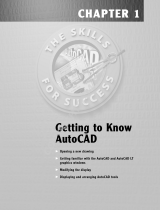 Wiley 978-0-470-26058-6 Datasheet
Wiley 978-0-470-26058-6 Datasheet
-
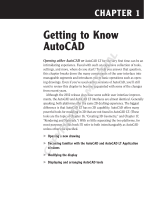 Wiley 978-1-1180-1677-0 Datasheet
Wiley 978-1-1180-1677-0 Datasheet
-
 Wiley 978-0-470-12150-4 Datasheet
Wiley 978-0-470-12150-4 Datasheet
-
 Wiley 978-1-1180-2221-4 Datasheet
Wiley 978-1-1180-2221-4 Datasheet
-
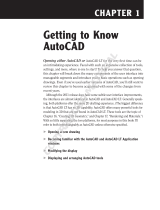 Wiley 978-0-470-60216-4 Datasheet
Wiley 978-0-470-60216-4 Datasheet
-
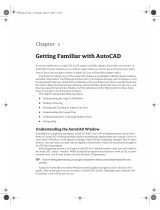 Wiley 978-0-470-00878-2 Datasheet
Wiley 978-0-470-00878-2 Datasheet
-
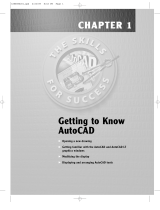 Wiley 978-0-4704-3868-8 Datasheet
Wiley 978-0-4704-3868-8 Datasheet
-
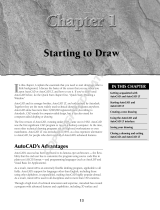 Wiley 978-0-470-12049-1 Datasheet
Wiley 978-0-470-12049-1 Datasheet
-
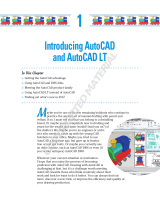 Wiley AutoCAD 2012 For Dummies User manual
Wiley AutoCAD 2012 For Dummies User manual
-
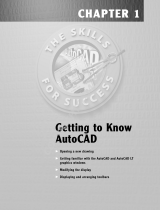 Wiley 978-0-470-12653-0 Datasheet
Wiley 978-0-470-12653-0 Datasheet








































